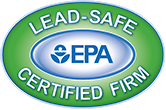Best Practices for Asbestos Abatement
What is Asbestos?
Asbestos typically refers to six types of naturally occurring materials that are composed of very small and durable fibers that have no detectable smell or taste. The term “asbestos abatement” simply means to remove any hazardous asbestos in a structure, or to contain it to the point that it is not a threat to human health, through guidelines and processes laid out by state and government regulations. Asbestos is commonly found in houses and buildings that were constructed before 1980; at that time, no one was aware of the harmful health risks associated with asbestos exposure. It was often used as an electrical insulator and building material due to its high heat tolerance and durable properties. The height of asbestos usage in construction was in the 1960’s and 70’s, but soon after this time it was learned that the material was unsafe to use and was quickly banned in new projects.
Why is Asbestos dangerous and where can it be commonly found?
Today, asbestos is a well-known health and safety hazard; inhalation of asbestos fibers can lead to various lung conditions such as asbestosis, mesothelioma and several other types of cancers. Symptoms of asbestos-caused illnesses often do not present themselves until years after initial exposure. It is when asbestos is crushed, broken or disturbed that it is most dangerous. Released asbestos fibers are so small they can remain suspended in the air for long periods of time, making inhalation of them likely for the people who reside within the building. Asbestos does not pose a direct threat to humans when it is undisturbed, but being classified as a human carcinogen, there is no safe level of exposure. Certain asbestos-containing materials that are particularly high-risk are highly friable, or breakable, and often can be found in the following locations:
- Insulation that is applied to pipe fittings, boilers, tanks and ventilation ducts
- Surfacing materials such as acoustical plaster, fire insulation and “popcorn ceiling” material
- Linoleum flooring that contains a fibrous backing material
Less friable asbestos-containing materials can include joint compound, floor tiles and asbestos siding. Although these types of materials are not as friable as others, they still pose a significant threat during demolition activities. People who live or work in buildings that were likely constructed using asbestos should avoid activities such as sawing, sanding and drilling due to the high probability of releasing harmful fibers into the air.
How do asbestos abatement crews remove hazardous materials?
When a professional asbestos abatement crew comes into a house or building to remove or contain the materials, they will be equipped with PPE (personal protective equipment) to avoid any health hazards. The PPE that workers are provided with is often disposable and usually consists of overalls, head covers and foot covers that are made from a synthetic fabric that does not allow asbestos fibers to pass through. Workers should also be provided with respiratory protection approved for the hazards they will be exposed to, such as a half or full facepieces and air-purifying respirators with replaceable filters.
When it is time to begin the asbestos removal of the contaminated structure, the site should be clearly marked as a hazardous area and sealed off from the rest of the building to avoid the spread of asbestos fibers. Contractors typically will shut off air conditioning and heating systems to avoid fibers being spread to other areas of the house or building via air ducts. Anyone who works or resides in a building that is about to be treated must leave the area while the project is underway. Even if asbestos is not present in a structure, all contractors are required to submit a notification of demolition to the PSCCA (Puget Sound Clean Air Agency) due to the potential health and safety risk. Workers should never break removed materials for easier cleanup – doing so can release fibers into the air and potentially form a risk for the workers. Asbestos-containing materials should be wet down during removal and cleanup to prevent any loose fibers from spreading or becoming airborne. The worksite should always be clean and free of visible debris in order to maintain organization and productivity.
What happens after the asbestos abatement is completed?
When the asbestos abatement is completed, the area should be thoroughly cleaned with wet mops and only HEPA vacuums; standard vacuum cleaners may spread fibers through the air and are not sealed in a way that will prevent the spreading of asbestos particles. The cleanup of the hazardous materials, including the clothing worn by the workers and any equipment used, should be properly sealed and labeled in heavy-duty bags to avoid any leakage or misplacement. Improper handling/disposal of asbestos can result in fines, or in serious violations, criminal prosecution. The last step of the asbestos abatement project is to send the customer a detailed record of the work that was done and an outline of the procedures that were followed.
Where do asbestos-containing materials go after they have been removed from the job site?
In some cases, asbestos can be recycled following its removal. One way this is done is by heating it in a sodium hydroxide solution that is above 2,282 degrees Fahrenheit to break down the asbestos. The result is a thermal decomposition of fibers and produces a non-hazardous glass that can be used for glass and stoneware products, or as an aggregate for roadways and concrete. Benefits of recycling asbestos include the production of reusable products, reduction of waste, preventing asbestos from going to landfills and offsetting the cost of abatement. Unfortunately, asbestos recycling is not currently available in the United States. The cost of recycling asbestos waste is about three times the cost of disposing of it in a landfill that is designated to receive asbestos-containing materials. However, private companies around the world are working on developing more affordable ways to recycle these types of products so that it is more easily accessible to the public. As technology improves and landfill space continues to diminish, asbestos recycling will become a more viable and ethical way of disposing of asbestos waste.




